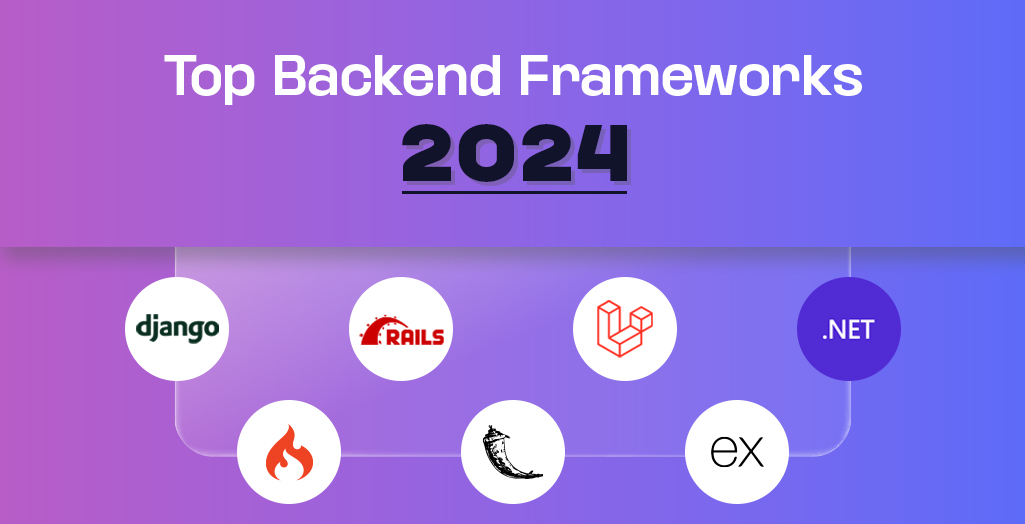In the dynamic world of web development, backend frameworks play a crucial role in creating robust, scalable, and efficient web applications. As of 2024, several backend frameworks have emerged as favorites among developers due to their performance, ease of use, and community support. This blog will explore the most popular backend frameworks, highlighting their features, advantages, and ideal use cases.
1. Express.js
Express.js, a minimal and flexible Node.js web framework, provides a robust set of features for building web and mobile applications. It simplifies the process of writing server-side code for Node.js and is known for its fast, unopinionated, and minimalist approach.
Features
- Middleware: Easy integration of various middleware for handling requests.
- Routing: Powerful routing mechanism to manage different routes.
- Performance: Efficient handling of asynchronous operations.
- Scalability: Suitable for both small and large-scale applications.
Use Cases
- Single-page applications (SPAs)
- RESTful APIs
- Real-time applications using WebSockets
Why It’s Popular
Express.js is popular due to its simplicity and flexibility. It provides developers with the core tools needed to build a server without imposing too many conventions or opinions, allowing for a high degree of customization.
2. Django
Django is a high-level Python web framework that encourages rapid development and clean, pragmatic design. It follows the “batteries-included” philosophy, providing many features out of the box.
Features
- ORM: Powerful Object-Relational Mapping (ORM) for database interactions.
- Admin Panel: Built-in administrative interface for managing application data.
- Security: Provides protection against common security threats.
- Scalability: Suitable for handling high-traffic applications.
Use Cases
- Content management systems (CMS)
- Social networking sites
- E-commerce platforms
Why It’s Popular
Django is favored for its ease of use, extensive documentation, and a strong emphasis on security. Its comprehensive suite of features allows developers to build complex applications quickly and efficiently.
3. Ruby on Rails
Ruby on Rails, commonly referred to as Rails, is a server-side web application framework written in Ruby. It follows the Convention over Configuration (CoC) and Don’t Repeat Yourself (DRY) principles, promoting efficient and maintainable code.
Features
- Active Record: An ORM system that simplifies database interactions.
- Scaffolding: Automatically generates some of the boilerplate code needed.
- MVC Architecture: Separates the application logic into distinct layers.
- Community and Plugins: Extensive library of plugins (gems) and a supportive community.
Use Cases
- Rapid prototyping
- E-commerce sites
- Content management systems
Why It’s Popular
Rails is popular for its developer-friendly environment, making it easy to get started and build powerful applications quickly. The emphasis on convention and productivity helps developers write less code while achieving more.
4. Laravel
Laravel is a PHP framework designed to make developing web applications easier and faster through built-in features and an elegant syntax. It adopts the Model-View-Controller (MVC) architectural pattern.
Features
- Eloquent ORM: Intuitive ActiveRecord implementation for working with databases.
- Blade Templating Engine: Simple yet powerful templating engine.
- Authentication: Built-in user authentication system.
- Task Scheduling: Allows scheduling of periodic tasks.
Use Cases
- Enterprise-level applications
- E-commerce platforms
- RESTful APIs
Why It’s Popular
Laravel is known for its comprehensive ecosystem, which includes tools for database migration, routing, and authentication. Its elegant syntax and extensive documentation make it a favorite among PHP developers.
5. Spring Boot
Spring Boot is an extension of the Spring framework, designed to simplify the bootstrapping and development of new Spring applications. It provides a preconfigured set of features to get a Spring application up and running quickly.
Features
- Microservices: Simplifies the creation of microservices-based applications.
- Embedded Servers: Embedded Tomcat, Jetty, or Undertow servers.
- Spring Initializr: Web-based tool to bootstrap new projects.
- Security: Robust security features with Spring Security.
Use Cases
- Enterprise-level applications
- Microservices architectures
- RESTful APIs
Why It’s Popular
Spring Boot’s ability to simplify the configuration and setup of Spring applications makes it a popular choice for Java developers. It provides a production-ready environment with minimal effort, allowing developers to focus on writing business logic.
Conclusion
Choosing the right backend framework depends on the specific needs and requirements of your project. Each framework has its strengths and is suited to different types of applications. Whether you prioritize speed, scalability, or ease of use, there is a backend framework that fits your needs. As of 2024, the frameworks mentioned above continue to lead the way in web development, supported by active communities and a wealth of resources to help developers create powerful and efficient applications.




